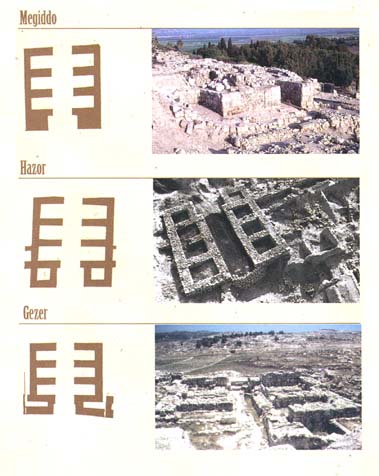Image Details

Plans by Israel Exploration Society/Photos (top to bottom) by Megiddo Expedition, Selz Foundation/Hazor Excavations, Hershel Shanks
The three gates have long stood as a dramatic example of how the Bible is proved right by archaeology. But the consensus over the gates is now under attack. Israel Finkelstein and David Ussishkin are re-excavating Megiddo, and they believe that the gate there is not Solomonic at all but rather dates to the ninth century B.C.—a good hundred years or so after Israel’s wise king. The debate over the dating of the gates occupied a special session at the most recent academic conference of archaeologists and Bible scholars. Despite their reputations, Finkelstein and Ussishkin have yet to win many colleagues to their point of view. Interest is sure to remain high, however, because the debate touches on an even larger question: Are King David and King Solomon historical figures or are they, as one group of scholars vociferously maintains, merely mythical heroes?
